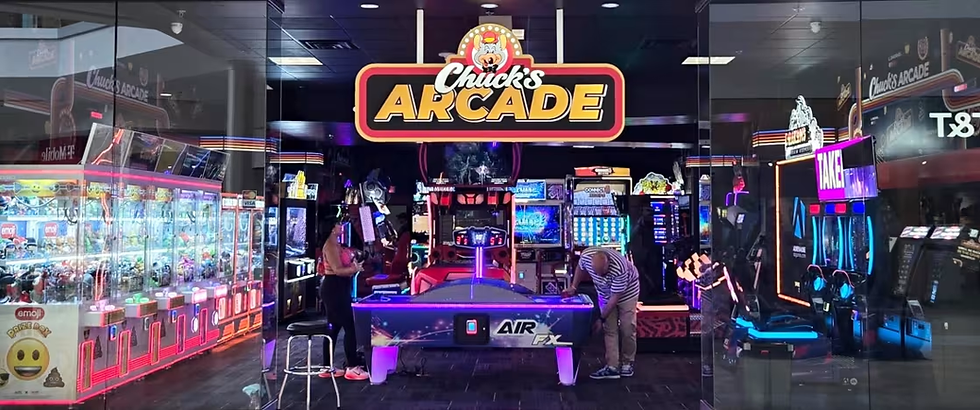Chuck E. Cheese Grows Up: The Rise of Adult-Centric Arcades
- Mwanje Thompson

- Jul 4, 2025
- 2 min read

In a strategic move to expand its aging customer base, Chuck E. Cheese is developing adult-friendly arcade spaces aimed at millennials and Gen Z adults who grew up visiting the iconic children’s entertainment brand. This pivot not only repositions the company in a competitive market, but also taps into nostalgia, nightlife trends, and experience-based consumer culture (Rodriguez, 2024).
Why Chuck E. Cheese Is Targeting Adults
Chuck E. Cheese’s decision to grow into adult-centered entertainment isn’t unprecedented. Competitors like Dave & Buster’s and Barcade have already carved out a loyal adult fan base by combining retro gaming with food and drink service. Chuck E. Cheese aims to differentiate itself through its brand recognition and intergenerational appeal. According to CEO David McKillips, the company is exploring curated spaces featuring modern cocktails, gourmet menus, and late-night hours (Smith, 2024).
This shift recognizes that many millennials are now parents or professionals who crave “grown-up fun” without losing the joy and playfulness of their youth.
Experience-Driven Economy Meets Nostalgia
In today’s marketplace, brands that offer experiential value often outperform those offering products alone. The adult arcade model—complete with skee-ball, vintage pinball, and revamped classics—is uniquely positioned to attract adults looking for nostalgic escapism with a side of social connection (Nguyen, 2023).
As consumers seek alternatives to bars and traditional dining, entertainment-forward venues are becoming preferred gathering spaces. Chuck E. Cheese’s nostalgic branding and nationwide footprint give it a competitive edge in capitalizing on this demand (Thompson, 2024).
Cultural Implications and Market Potential
For many Black and Brown millennials, Chuck E. Cheese was a staple of childhood birthday parties, school outings, and family bonding. Reintroducing this space—now with curated music, elevated food, and adult beverages—could foster new cultural relevance. It also offers opportunities for local entrepreneurs, artists, and DJs to collaborate within these redesigned venues.
The adult arcade could become a new kind of “sanctuary”—not for children’s play, but for adult joy, relaxation, and reconnection.
Conclusion
Chuck E. Cheese’s rebranding move is more than a marketing stunt—it’s a cultural evolution. By adapting its nostalgic appeal for adults, the company is entering a growing market while honoring its multi-generational legacy.
Call to Action:Would you pull up to a grown-up Chuck E. Cheese? Let us know your thoughts, and subscribe to RichXCultured for more stories where culture and innovation meet.
References
Nguyen, T. (2023). The rise of nostalgic entertainment in adult nightlife. Experience Economy Journal, 11(2), 34–41.
Rodriguez, L. (2024). Chuck E. Cheese explores adult-focused arcades. Business Insider. https://www.businessinsider.com/chuck-e-cheese-targets-adults
Smith, A. (2024). CEO confirms plans for Chuck E. Cheese 2.0. Forbes. https://www.forbes.com/sites/chuck-e-cheese-adult-arcade
Thompson, M. (2024). Reimagining childhood brands for adult consumers. Marketing Today, 22(3), 17–25.





Comments